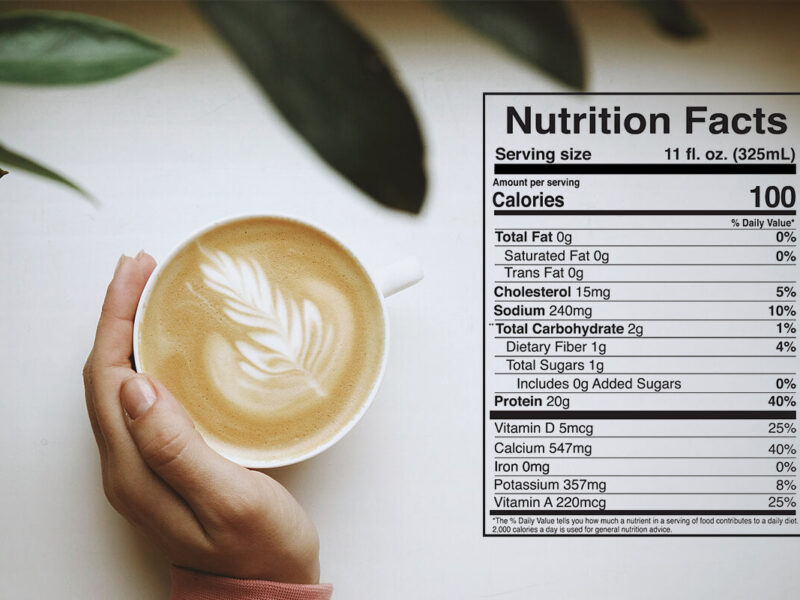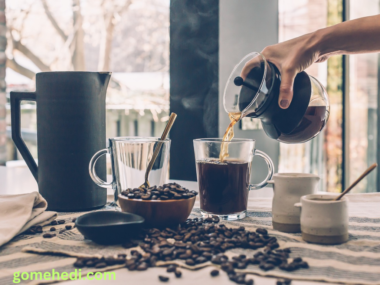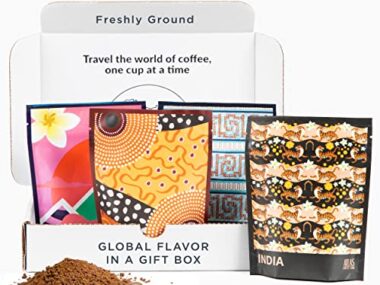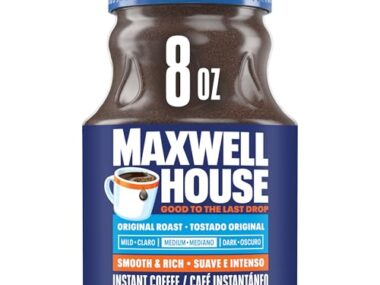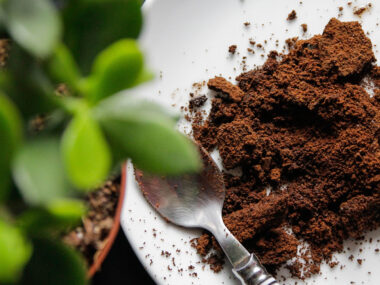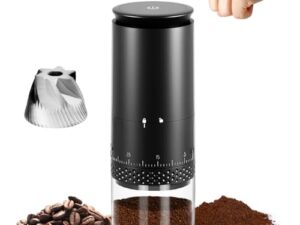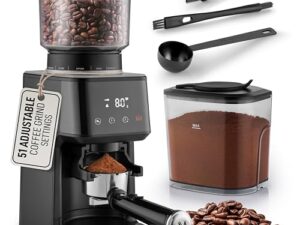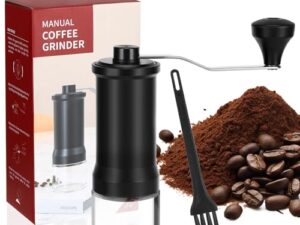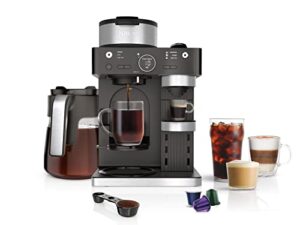Curious about the calories in your morning cup of coffee? The answer might surprise you.
A plain cup of black coffee contains virtually no calories. Coffee is a beloved beverage for many people around the world. It’s a staple of morning routines and social gatherings. But if you’re watching your calorie intake, you might wonder how your daily brew fits into your diet.
The good news is, plain black coffee has almost no calories, making it a great choice for those counting calories. But, the story changes when you start adding extras like sugar, milk, or flavored syrups. These additions can significantly increase the calorie content of your coffee. Let’s explore how different ingredients can impact the calories in your cup.
Calories In Black Coffee
When thinking about your daily coffee intake, understanding the caloric content is key. Black coffee is a popular choice for those wanting to limit their calorie consumption. But how many calories does it really have? Let’s dive into the details of black coffee’s caloric content.
Basic Caloric Content
Black coffee is renowned for its low calorie count. A standard 8-ounce cup of black coffee typically contains:
- Calories: 2
- Fat: 0 grams
- Carbohydrates: 0 grams
- Protein: 0 grams
With just 2 calories per cup, black coffee is a great option for those watching their calorie intake. It provides a boost of energy without adding significant calories to your diet.
Here’s a simple table to illustrate the nutritional content of black coffee:
| Nutrient | Amount per 8 oz cup |
|---|---|
| Calories | 2 |
| Fat | 0 grams |
| Carbohydrates | 0 grams |
| Protein | 0 grams |
Factors Affecting Calories
While black coffee itself is very low in calories, several factors can increase its caloric content:
- Add-ins: Adding sugar, milk, cream, or flavored syrups can significantly increase the calorie count.
- Serving Size: Larger cups of coffee will contain more calories, especially if you add extras.
- Brewing Methods: Some brewing methods, like cold brew, might slightly alter the calorie content.
Consider the impact of common add-ins:
| Add-in | Calories per serving |
|---|---|
| Sugar (1 teaspoon) | 16 |
| Milk (1 tablespoon) | 9 |
| Heavy Cream (1 tablespoon) | 52 |
| Flavored Syrup (1 pump) | 20 |
To keep your coffee low in calories, opt for black coffee and avoid high-calorie add-ins. Choose smaller serving sizes and be mindful of how much sugar or cream you use.
Understanding these factors helps you make better choices about your coffee and calorie intake. Enjoy the benefits of black coffee without worrying about extra calories.
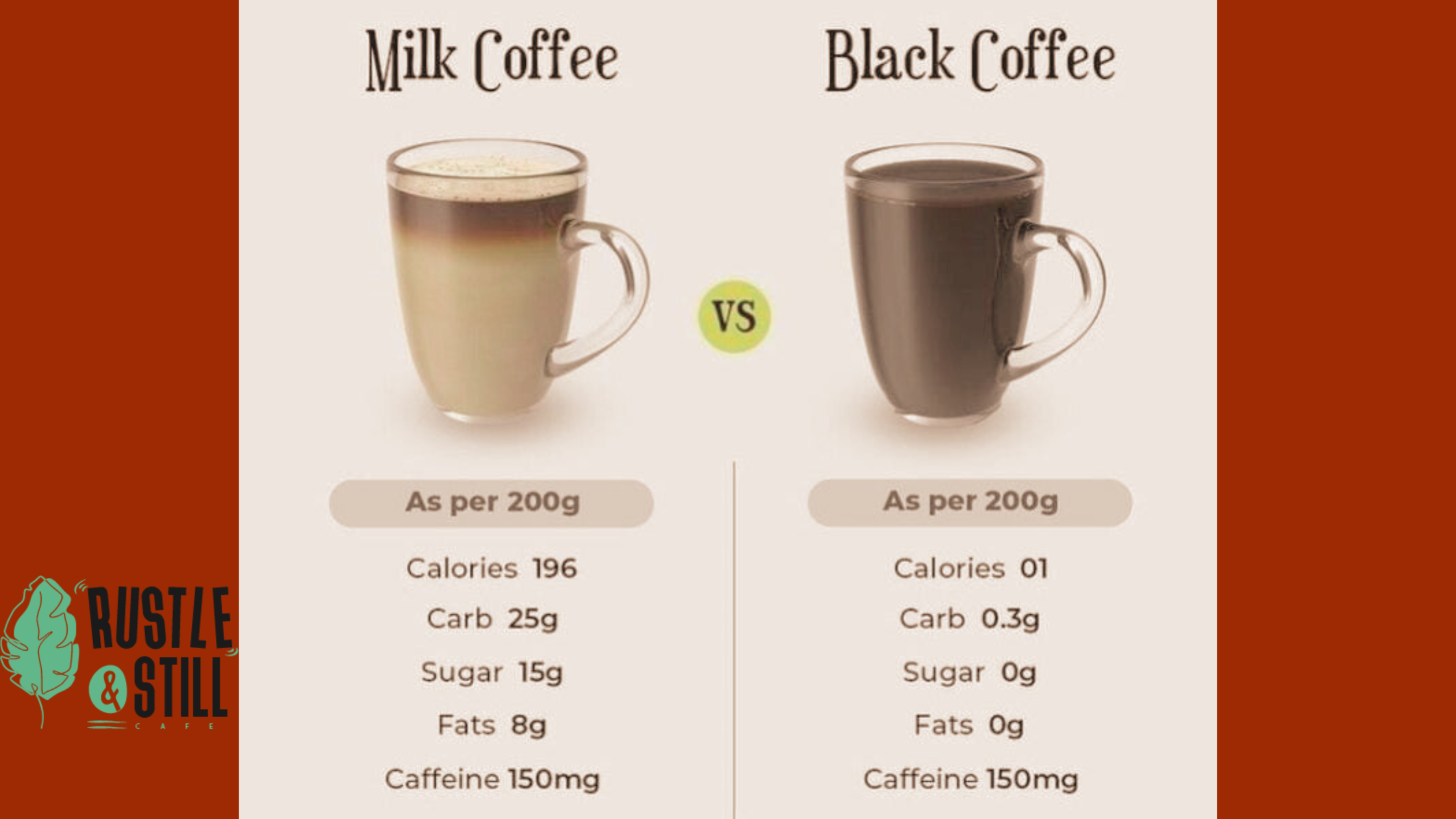
Credit: rustleandstill.com
Calories In Coffee Additives
When thinking about how many calories are in a cup of coffee, it’s important to consider the additives. Coffee itself is low in calories, but the ingredients added can significantly increase the calorie count. This guide will explore the calories in popular coffee additives like milk, cream, sugar, and sweeteners.
Milk And Cream
Milk and cream are common additives in coffee. They can transform a simple cup into a richer, creamier beverage. However, they also add calories.
Types of Milk:
- Whole milk: 1 cup (240 ml) – 150 calories
- 2% milk: 1 cup (240 ml) – 120 calories
- Skim milk: 1 cup (240 ml) – 80 calories
- Almond milk: 1 cup (240 ml) – 30-50 calories
- Soy milk: 1 cup (240 ml) – 80-100 calories
Types of Cream:
- Half-and-half: 1 tbsp (15 ml) – 20 calories
- Heavy cream: 1 tbsp (15 ml) – 50 calories
- Whipped cream: 1 tbsp (15 ml) – 8 calories
These values can vary based on the brand and preparation method. Adding just a splash of milk or cream can increase the calories in your coffee significantly. For example, adding 2 tbsp of heavy cream to your coffee adds 100 calories.
For a healthier option, consider plant-based milks like almond or soy milk. They offer fewer calories and are often fortified with vitamins and minerals.
Sugar And Sweeteners
Sugar and sweeteners are other popular coffee additives. While they enhance the flavor, they also add calories.
Types of Sugar:
- White sugar: 1 tsp (4 grams) – 16 calories
- Brown sugar: 1 tsp (4 grams) – 17 calories
- Honey: 1 tsp (7 grams) – 21 calories
- Agave syrup: 1 tsp (7 grams) – 21 calories
Types of Sweeteners:
- Stevia: 1 packet – 0 calories
- Aspartame: 1 packet – 0 calories
- Saccharin: 1 packet – 0 calories
Sugar adds significant calories to your coffee. For example, adding 2 tsp of white sugar increases the calorie count by 32 calories. Sweeteners like stevia or aspartame are good alternatives. They provide sweetness without adding calories.
Some sweeteners may have an aftertaste. Experiment with different types to find what suits your taste. Reducing sugar intake is beneficial for overall health. Consider using natural sweeteners like honey or agave syrup in moderation.
Understanding the calorie content of these additives helps in making healthier choices. Whether you prefer milk, cream, sugar, or sweeteners, knowing their calorie impact is crucial.
Types Of Coffee Drinks
Exploring how many calories are in a cup of coffee can be fascinating. Different types of coffee drinks offer varied calorie counts. This is because of the ingredients and preparation methods. Let’s delve into the types of coffee drinks and understand their caloric content.
Espresso
Espresso is a strong and concentrated coffee. It is made by forcing hot water through finely-ground coffee beans. The process is quick and results in a small, intense shot of coffee. Espresso is often used as a base for many other coffee drinks.
A single shot of espresso (about 1 ounce) contains:
- Calories: 1
- Fat: 0 grams
- Carbohydrates: 0 grams
- Protein: 0 grams
These low numbers make espresso a great choice for those counting calories. It is almost calorie-free. Many people enjoy it for its strong flavor and quick energy boost.
Espresso can be enjoyed alone or with a splash of milk. It can also be sweetened with sugar or syrups. But adding these extras will increase the calorie count.
Latte Vs. Cappuccino
Lattes and cappuccinos are popular espresso-based drinks. Both contain espresso, steamed milk, and milk foam. However, they differ in their milk and foam ratios.
Here is a comparison of their typical caloric content:
| Drink | Calories | Milk Content | Foam Content |
|---|---|---|---|
| Latte (12 oz) | 120-190 | High | Low |
| Cappuccino (12 oz) | 90-150 | Moderate | High |
A latte has more steamed milk and less foam. This makes it creamier and higher in calories. A cappuccino has equal parts of steamed milk and foam. This results in a lighter and frothier drink with fewer calories.
Both drinks can be customized. You can use non-fat milk or plant-based milk to reduce calories. Adding flavored syrups or whipped cream will increase the calorie count.
Understanding these differences helps in making informed choices. Whether you prefer a latte or a cappuccino, you can enjoy your coffee while managing your calorie intake.
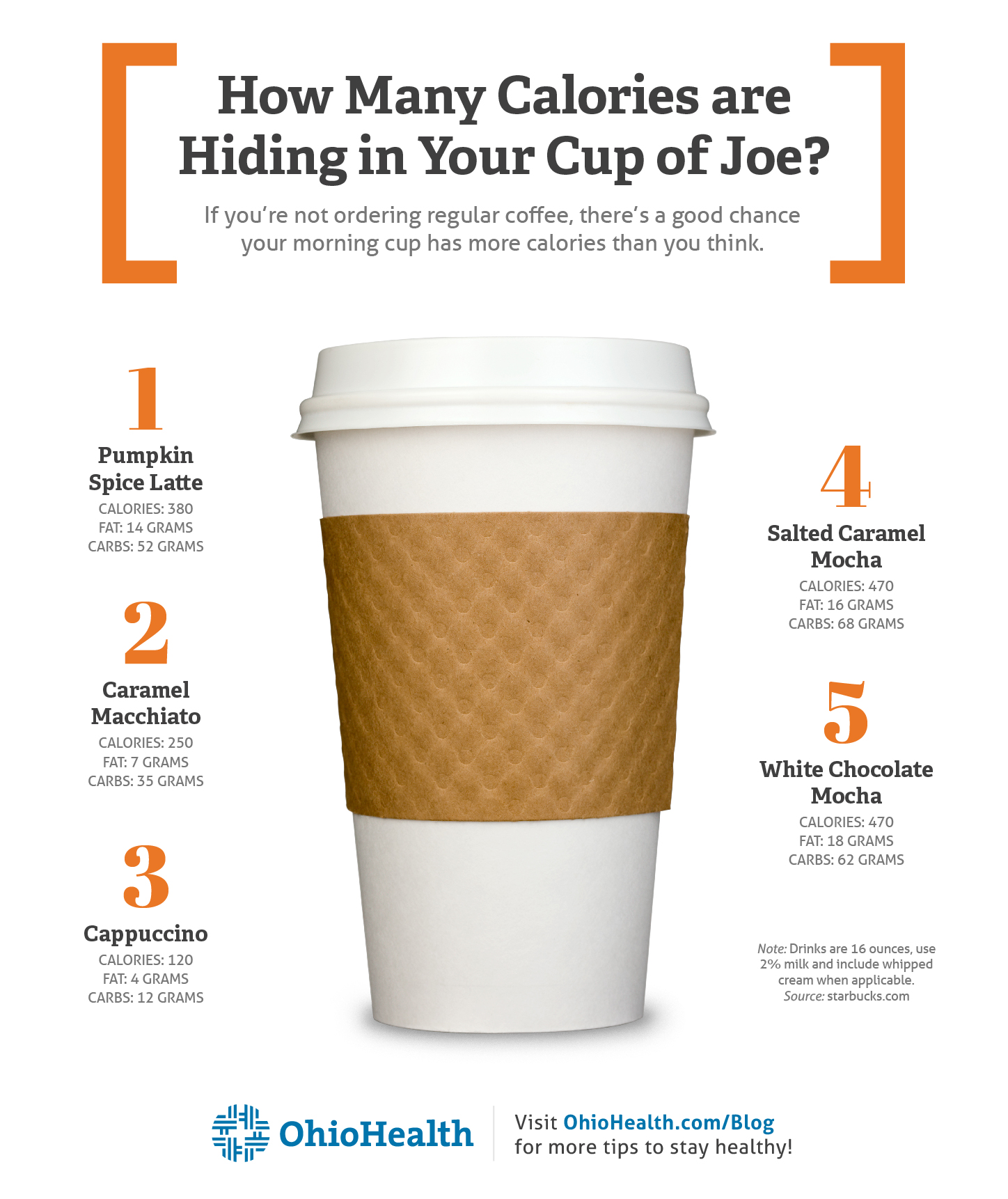
Credit: blog.ohiohealth.com
Decaf Vs. Regular Coffee
Do you know how many calories are in your cup of coffee? This might surprise you. The choice between decaf and regular coffee can impact calorie intake. Let’s explore the differences between decaf and regular coffee, focusing on their caloric content and health implications.
Caloric Differences
The caloric content of coffee depends on several factors. The main difference lies in the caffeine content. Regular coffee has more caffeine than decaf coffee. But does this affect the calorie count?
Here is a quick comparison of the caloric content in an 8-ounce cup of coffee:
| Type | Calories |
|---|---|
| Regular Coffee (black) | 2 |
| Decaf Coffee (black) | 2 |
As you can see, both regular and decaf coffee have the same number of calories. This is because the process of decaffeination does not add or remove calories. The calories in coffee come from the natural compounds in the coffee beans.
But the story changes if you add extras to your coffee:
- Sugar: 16 calories per teaspoon
- Cream: 52 calories per tablespoon
- Whole milk: 9 calories per tablespoon
- Syrups and flavorings: 20-80 calories per pump
So, while the coffee itself is low in calories, the additions can add up quickly.
Health Implications
The health implications of regular vs. decaf coffee go beyond just calories. Caffeine content plays a big role. Regular coffee has more caffeine. This can be both good and bad, depending on your health needs.
Benefits of Regular Coffee:
- Increased alertness and concentration
- Potential to boost metabolism
- May reduce the risk of certain diseases, like Parkinson’s
Downsides of Regular Coffee:
- May cause anxiety and jitteriness
- Can disrupt sleep patterns
- May increase heart rate
Benefits of Decaf Coffee:
- Reduced risk of caffeine-related side effects
- Still contains antioxidants
- Less likely to interfere with sleep
Downsides of Decaf Coffee:
- Lower levels of beneficial compounds
- May still contain small amounts of caffeine
Both types of coffee have their pros and cons. The best choice depends on your personal health needs and preferences.
Homemade Vs. Store-bought
Coffee is a beloved beverage worldwide. Many ponder about its calorie content, especially when comparing homemade to store-bought. The calorie count can vary greatly depending on the ingredients and preparation methods. Let’s delve into the differences between homemade and store-bought coffee in terms of calories and customization options.
Caloric Comparison
The calorie content in coffee can range significantly. A simple cup of black coffee, whether homemade or store-bought, contains very few calories. However, the additions you make can change this drastically.
Homemade Coffee:
- Black coffee: approximately 2 calories per cup
- Adding a teaspoon of sugar: +16 calories
- Adding a tablespoon of cream: +52 calories
Store-Bought Coffee:
- Black coffee: around 2 calories per cup
- Latte (8 oz): approximately 120 calories
- Frappuccino: can range from 200 to 600+ calories
Here’s a table comparing some common coffee types:
| Coffee Type | Calories (Homemade) | Calories (Store-Bought) |
|---|---|---|
| Black Coffee | 2 | 2 |
| Latte | 80 (with whole milk) | 120 |
| Frappuccino | Not typically homemade | 200-600+ |
Customization Options
Homemade coffee allows for greater control over ingredients and calorie count. You can choose the type of milk, sweeteners, and flavors. This control helps keep the calorie count low.
Homemade Customizations:
- Choose low-fat or non-dairy milk alternatives
- Use sugar substitutes like stevia
- Add natural flavors like cinnamon or vanilla extract
Store-bought coffee offers convenience but often includes higher-calorie options. Many coffee shops use syrups and whole milk, which increase the calorie content.
Store-Bought Customizations:
- Request non-fat or almond milk
- Ask for sugar-free syrups
- Skip the whipped cream
Being aware of these options helps make informed choices. Whether homemade or store-bought, you can enjoy your coffee while managing calorie intake.

Credit: www.facebook.com
Coffee Serving Sizes
Coffee is a beloved beverage enjoyed by millions. It’s comforting and energizing. But many wonder, how many calories are in a cup of coffee? The answer depends on the serving size. Let’s explore the different coffee serving sizes and their caloric impact.
Standard Serving Sizes
Understanding standard serving sizes helps determine the calories in your coffee. Different coffee shops and brands may vary, but these are common sizes:
- Small (8 oz): This is the standard home-brewed coffee size. It’s also known as a “short” in some cafes.
- Medium (12 oz): Often referred to as a “tall” in popular coffee chains.
- Large (16 oz): Known as a “grande” in many coffee shops.
- Extra Large (20 oz): Sometimes called a “venti” or “large” in various cafes.
Here’s a quick overview of these sizes:
| Size | Ounces | Milliliters |
|---|---|---|
| Small | 8 oz | 240 ml |
| Medium | 12 oz | 355 ml |
| Large | 16 oz | 475 ml |
| Extra Large | 20 oz | 590 ml |
The calories in a cup of plain black coffee are minimal. An 8 oz cup has about 2 calories. But, adding ingredients like cream, sugar, or flavored syrups increases the calorie count.
Effects On Caloric Intake
The size of your coffee affects your caloric intake. A larger cup means more room for extras like milk, sugar, or syrups. These additions can significantly increase the calorie count:
- Black Coffee: 2 calories per 8 oz cup.
- 1 tablespoon of sugar: Adds 49 calories.
- 1 tablespoon of cream: Adds 52 calories.
- 1 pump of flavored syrup: Adds 20 calories.
Let’s see how these additions can impact the total calories in different sizes:
| Size | Black Coffee (cal) | With Sugar (cal) | With Cream (cal) | With Syrup (cal) |
|---|---|---|---|---|
| Small (8 oz) | 2 | 51 | 54 | 22 |
| Medium (12 oz) | 3 | 52 | 55 | 23 |
| Large (16 oz) | 4 | 53 | 56 | 24 |
| Extra Large (20 oz) | 5 | 54 | 57 | 25 |
By understanding these details, you can better manage your daily caloric intake. Keep track of what you add to your coffee. A simple black coffee is low in calories, but extras can add up quickly.
Impact Of Brewing Methods
Understanding how many calories are in a cup of coffee can be tricky. The brewing method plays a significant role. Different methods can affect the calorie count in your favorite cup of joe. Let’s explore how drip coffee and French press coffee compare.
Drip Coffee
Drip coffee is one of the most common brewing methods. It’s simple and efficient. The calorie count in a cup of black drip coffee is minimal. A standard 8-ounce cup contains about 2 calories. This is because drip coffee doesn’t use any added ingredients. The water passes through the coffee grounds, extracting the flavors and oils.
Here are some key points about drip coffee:
- Low in calories
- Easy to prepare
- Consistent flavor
If you add milk, cream, or sugar, the calorie count increases. Here’s a quick comparison:
| Ingredient | Calories (per serving) |
|---|---|
| Black Coffee | 2 |
| 1 tbsp Milk | 9 |
| 1 tbsp Cream | 52 |
| 1 tsp Sugar | 16 |
Keep these additions in mind if you’re watching your calorie intake. Drip coffee is a great choice for a low-calorie drink.
French Press
French press coffee has a rich and bold flavor. The brewing method is different from drip coffee. Instead of passing water through the grounds, the coffee steeps in hot water. This method extracts more oils and flavors. As a result, French press coffee can have a slightly higher calorie count.
A standard 8-ounce cup of black French press coffee contains about 2-4 calories. The variation depends on the type of coffee beans and the brewing time. French press coffee often has a fuller body and more intense taste.
Key points about French press coffee:
- Rich and bold flavor
- Higher oil content
- Simple brewing process
Similar to drip coffee, adding milk, cream, or sugar will increase the calorie count. Here’s a comparison:
| Ingredient | Calories (per serving) |
|---|---|
| Black Coffee | 2-4 |
| 1 tbsp Milk | 9 |
| 1 tbsp Cream | 52 |
| 1 tsp Sugar | 16 |
French press coffee offers a rich taste experience. It’s slightly higher in calories but still a low-calorie option.
Health Considerations
Drinking a cup of coffee in the morning is a common ritual for many. But how many calories are in that cup? It’s a question worth considering, especially for those mindful of their health. Coffee itself has few calories, but additives can change its nutritional profile. Let’s dive into the health considerations of coffee.
Caloric Control
Maintaining caloric control is essential for a balanced diet. A standard cup of black coffee contains very few calories—around 2 calories per 8-ounce serving. This makes black coffee an excellent choice for those watching their caloric intake. But the story changes when additives enter the picture.
Here are common additives and their calorie impact:
- Sugar: One teaspoon of sugar adds about 16 calories.
- Milk: An ounce of whole milk adds 18 calories.
- Cream: One ounce of cream adds 52 calories.
- Syrups: One pump of flavored syrup adds around 20 calories.
To better visualize the impact, consider this table:
| Additive | Calories per Serving |
|---|---|
| Black Coffee (8 oz) | 2 |
| One Teaspoon of Sugar | 16 |
| One Ounce of Whole Milk | 18 |
| One Ounce of Cream | 52 |
| One Pump of Syrup | 20 |
Simple changes can keep your coffee low-calorie. Opt for low-calorie sweeteners or skim milk. Avoid high-calorie syrups and creams. Small adjustments make a significant difference in daily caloric intake.
Caffeine And Metabolism
Caffeine plays a key role in how coffee affects metabolism. Caffeine is a natural stimulant. It can boost metabolic rate and increase fat burning. This is beneficial for weight management.
Here are some effects of caffeine on metabolism:
- Increased Energy Expenditure: Caffeine can increase the number of calories burned.
- Fat Oxidation: It can enhance the body’s ability to break down fats.
- Thermogenesis: Caffeine can promote heat production, burning more calories.
But moderation is key. High caffeine intake can lead to negative effects. These include anxiety, insomnia, and increased heart rate. The recommended limit is up to 400 mg of caffeine per day. This is roughly four 8-ounce cups of coffee.
Here’s a quick look at the caffeine content in different coffee types:
| Coffee Type | Caffeine Content (mg) |
|---|---|
| Espresso (1 oz) | 63 |
| Brewed Coffee (8 oz) | 95 |
| Instant Coffee (8 oz) | 62 |
| Decaf Coffee (8 oz) | 3 |
Understanding caffeine’s impact on metabolism helps make informed choices. Enjoy coffee for its metabolic benefits. But stay within the recommended limits to avoid adverse effects.
Frequently Asked Questions
How Many Calories In A Cup Of Black Coffee?
A cup of black coffee typically contains only 2 calories. This makes it a low-calorie beverage choice. Enjoy it without added sugars or creamers to maintain its low-calorie benefit.
How Many Calories In A Cup Of Coffee With Milk And Sugar?
A cup of coffee with milk and sugar typically contains around 30-60 calories. The exact count varies with portion sizes.
Is Coffee Good During Weight Loss?
Yes, coffee can aid weight loss. It boosts metabolism, increases energy, and suppresses appetite. Avoid high-calorie additives.
How Many Calories Are In A 12 Oz Cup Of Black Coffee?
A 12 oz cup of black coffee contains approximately 2 calories. It is low in calories and ideal for weight-conscious individuals.
Conclusion
Understanding the calories in a cup of coffee helps you make better choices. Black coffee has almost no calories. Adding milk, sugar, or cream increases the count. This knowledge keeps you mindful of your intake. Enjoy your coffee wisely. Small changes can make a big impact.
Savor the taste without worrying too much about calories. Stay informed and enjoy your favorite beverage.
